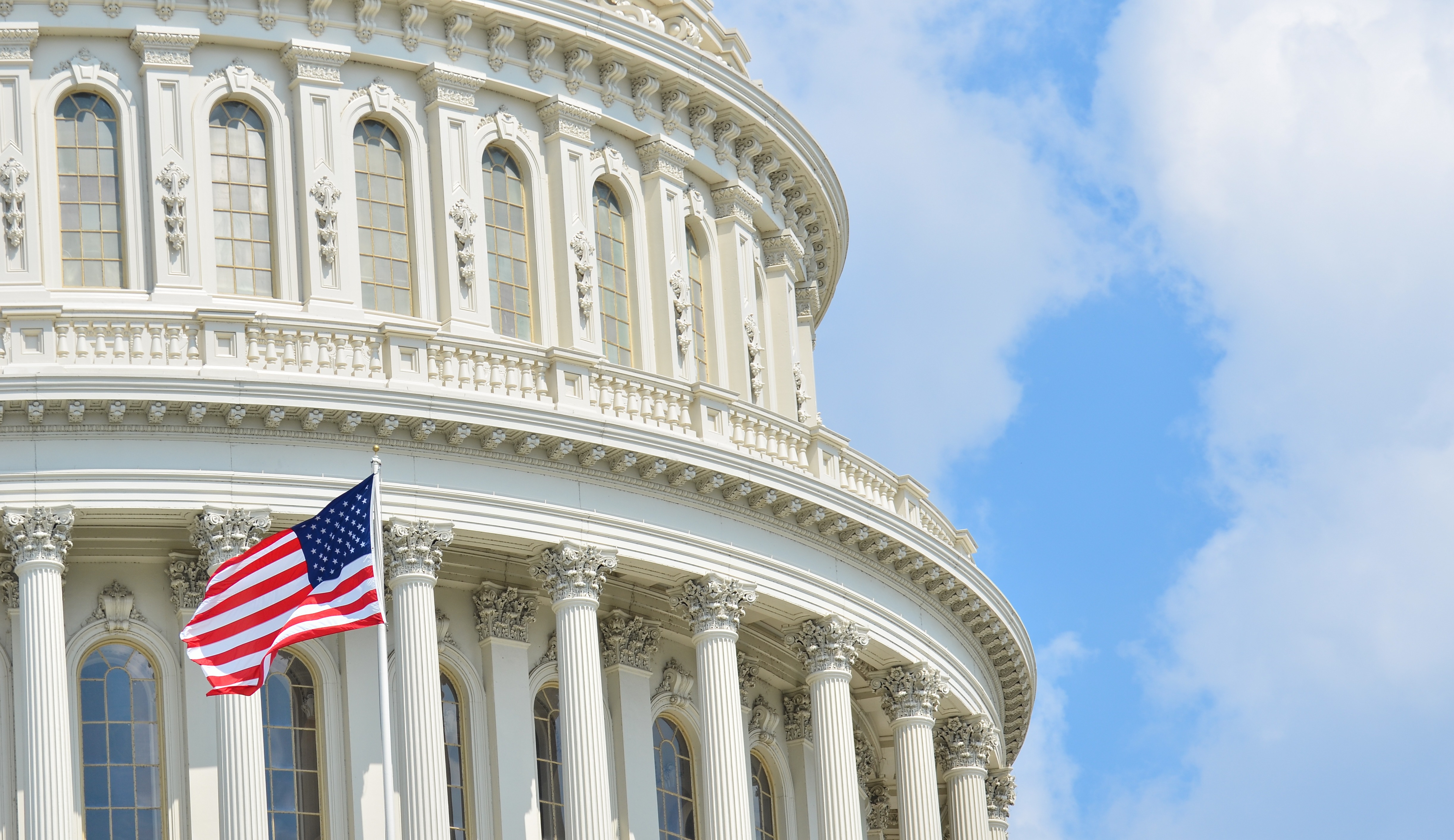
Passed into law on March 18, 2020, The Families First Coronavirus Response Act (FFCRA) provides emergency supplemental appropriations in reaction to the COVID-19 pandemic. Included in those appropriations are expanded testing for COVID-19, emergency funding for unemployment benefits, and expansion of leave benefits to those affected by COVID-19.
The legislation’s divisions that focus on emergency FMLA, employee sick leave, and corresponding tax credits (C, E, and G, respectively) are largely directed at small businesses and responsible employers will need to be cognizant of all applicable requirements and ensure compliance.
1. Emergency Family and Medical Leave Expansion Act
Division C, of the FFCRA expands FMLA to now include a new section 102(a)(1)(F) for which leave may be taken under FMLA and is available for a qualified need related to a public health emergency, which, in this instance is an emergency with respect to COVID-19 declared by a federal, state, or local authority.
Qualifying Need:
If an employee is unable to work or telework due to a need to care for a child due to school (elementary and secondary schools) or childcare facility has been closed due to a public health emergency, or if the childcare provider (e.g., nanny or au pair) is unavailable due to a public health emergency. The child must be under 18 years of age, or for those 18 years or older, incapable of self-care due to a mental or physical disability.
Rate of Pay:
The first ten days taken under the plan will be unpaid, though, if available the employee may use other accrued leave during that period. After that, the leave shall be paid at not less than two-thirds of the employee’s regular pay rate. This is capped at $200 per day and $10,000 in the aggregate.
Duration of Leave:
12 weeks, which includes job protection as required in the FMLA (including amendments to it made by this Act with regard to job protection requirements for an employer who employs fewer than 25 employees). Benefits are not retroactive.
Covered Employers:
Private companies and public agencies with fewer than 500 employees. Certain small businesses may become exempt if the requirements of the Act would threaten the viability of the business.
Eligible Employees:
The employee must have worked for the covered employer for at least 30 days.
More COVID-19 Information for Small Businesses: What the Coronavirus Stimulus Package Means for Small Businesses
2. Employee Paid Sick Leave:
Under the FFCRA’s Division E, Emergency Paid Sick Leave Act, covered employers (private companies with fewer than 500 employees and public agencies) will be required to provide employees with paid sick leave for a variety of circumstances related to COVID-19.
In the event that an employee is unable to work or telework due to COVID-19-related circumstances, the employer shall provide to their employees the following:
Covered Employers:
Private companies and certain public agencies with fewer than 500 employees. Certain small businesses may become exempt if the requirements of the Act would threaten the viability of the business.
Eligible Employees, Duration of Leave, and Rate of Pay:
All employees of covered employers are eligible for two weeks of paid sick time for circumstances related to COVID-19.
- Two weeks (up to 80 hours for full time employees) of paid sick leave at the employee’s regular pay rate (capped at $511/per day or $5,110 in the aggregate) if the employee is unable to work because the employee is quarantined (due to government mandate or based on the recommendation of a medical professional to self-quarantine), and/or experiencing symptoms of COVID-19 and seeking a diagnosis by a medical professional; or
- Two weeks (up to 80 hours for full time employees) of paid sick leave at two-thirds of the employee’s regular pay rate (capped at $200 per day or $2,000 in the aggregate) if the employee is unable to work in order to care for an individual that is quarantined (due to government mandate or based on the recommendation of a medical professional to self-quarantine), or to care for a child whose school or childcare facility is closed or the childcare provider (e.g. nanny or au pair) is unavailable for reasons related to COVID-19.
Legislation surrounding employee paid sick leave will take effect April 1, 2020 and planned to run through December 31, 2020.
3. Tax Credits for FFCRA Paid Sick and Paid Family and Medical Leave
Division G of the FFCRA outlines the various tax credits available to the covered employer for qualified wages. The tax credit goes into effect on April 1, 2020 and is currently planned to run through December 31, 2020.
Covered Employers:
Private companies and public agencies with fewer than 500 employees that are required to provide qualified family leave and/or emergency sick leave under the FFCRA.
Tax Credit Amounts:
FFCRA provides a covered employee a payroll tax credit equal to 100% of qualified family leave and emergency sick leave wages made with respect to FFCRA, up to a certain limit, per employee. Two scenarios:
- If an employee is unable to work or telework because the employee is quarantined (due to government mandate or based on the recommendation of a medical professional to self-quarantine), and/or experiencing symptoms of COVID-19 and seeking a diagnosis by a medical professional, the employer’s tax credit is capped at the employee’s regular rate of pay, up to $511 per day, or $5,110 in the aggregate.
- If an employee is unable to work in order to care for an individual that is quarantined (due to government mandate or based on the recommendation of a medical professional to self-quarantine), or to care for a child whose school or childcare facility is closed or the childcare provider is unavailable for reasons related to COVID-19, the employer’s tax credit is capped at the employee’s regular pay rate, up to $200 per day or $2,000 in the aggregate.
Tax Credit and Refund Process:
Should the covered employer’s payroll tax deposit be less than their total FFCRA tax credits, the employer could request that the excess be used to offset other tax obligations such as federal withholding for its employees (including those still working) and both the employer and employee portions of the Social Security and Medicare taxes for its employees (including those still working). The IRS has promised that in instances where a refund is owed, it will be expedited as quickly as possible.
The COVID-19 pandemic has created unprecedented challenges for business leaders. For more information on strategies to maintain productivity during this public health crisis, check out our ongoing information series regarding navigating social distancing and COVID-19.
Disclaimer: This post is not intended as legal, accounting, or financial advice and should not be understood as such. For questions related to your specific business or organization, please contact a practitioner who is licensed in your state.
Sources:
https://www.marketwatch.com/story/what-the-family-first-coronavirus-relief-bill-means-for-small-business-owners-and-self-employed-people-2020-03-21
https://www.dol.gov/agencies/whd/pandemic/ffcra-employee-paid-leave
https://www.kff.org/global-health-policy/issue-brief/the-families-first-coronavirus-response-act-summary-of-key-provisions/
https://www.shrm.org/resourcesandtools/hr-topics/benefits/pages/irs-and-dol-unveil-employer-tax-credits-for-covid-related-leaves.aspx
https://www.irs.gov/newsroom/treasury-irs-and-labor-announce-plan-to-implement-coronavirus-related-paid-leave-for-workers-and-tax-credits-for-small-and-midsize-businesses-to-swiftly-recover-the-cost-of-providing-coronavirus
https://www.bmdllc.com/resources/blog/ffcra-payroll-tax-credit-how-does-it-work





